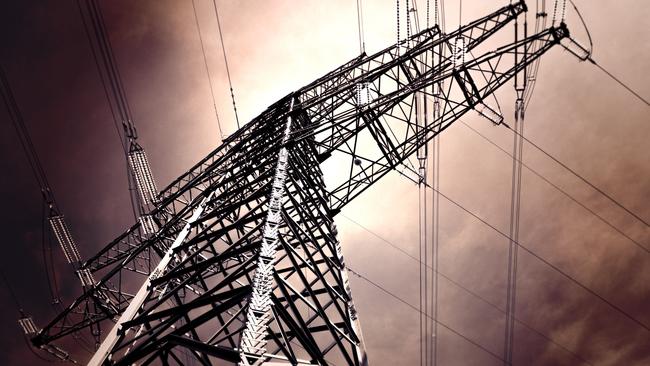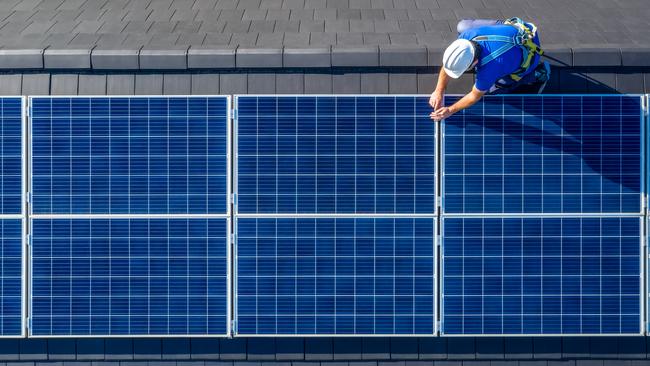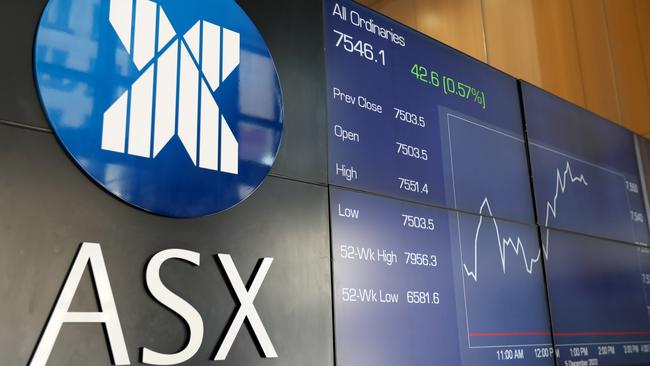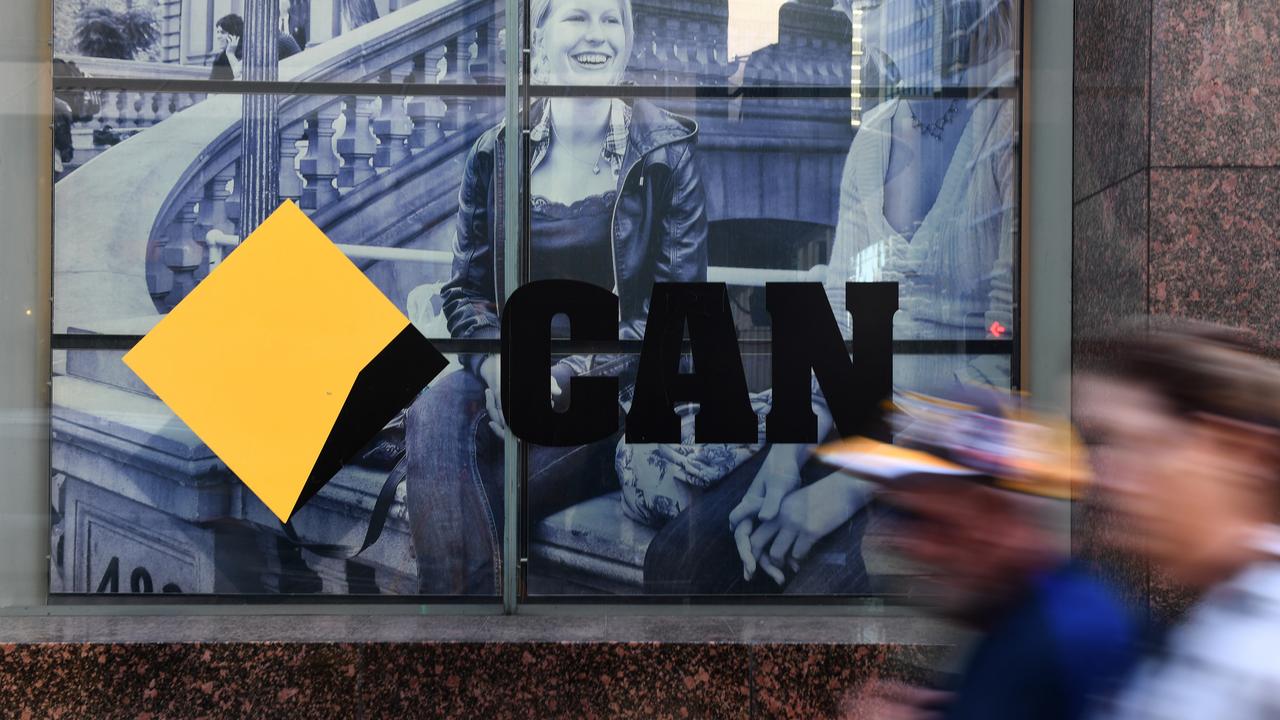
Heading into this week’s National Cabinet meeting on energy, one thing not on the table but the industry would like to see is an insurance policy to keep the lights on as Australia rushes into building a power grid underpinned by renewables.
More than a dozen large and mostly coal-fired power plants are scheduled to close over the next 15 years, leaving little room to move in a market that is still desperately building out firming capacity.
Mark Collette, the chief executive of EnergyAustralia, the nation’s third largest generator, has seized on one idea that has been floated by the Energy Security Board but is yet to gather political traction: closure contracts.
Such a move would keep ageing power stations and their infrastructure on standby through to the end of the decade to ensure power users don’t suffer brownouts or, worse, see the lights go off completely as Australia begins its bumpy ride transitioning to a green energy grid.
“Closure contracts are all about making sure that the closures are co-ordinated with the new entries (into the grid). If closures happen before new entries, we will have problems as a country,” Collette tells The Australian.

“It’s not about getting more production out of those facilities. It’s just having them there. And ready in case there are weather conditions or energy shocks that come along that need them to be there for a little while longer. I think we can be as a country very smart about how we do this.”
Even so, the idea of a closure contract could run into some political resistance as ultimately it will see either state governments or regulators such as AEMO pay for old coal power stations to sit idle for as long as a decade, ready to be fired up in the event they are needed. Under current rules, a power company needs to give the AEMO three years notice before closure of their generator.
Some big closures are to come in a little over five years with EnergyAustralia’s massive Yallourn coal-fired plant scheduled to end its life in 2028 and Origin Energy on track to close the Eraring station in 2025.
Closure contracts will need to cover areas such as coal or gas contracts and potentially pay enough to keep maintenance going so the plants can reliably switch on when needed. For some state governments, it could be tempting to turn the old plants on for a more regular service.
Collette, who also chairs the Australian Energy Council, which includes the nation’s big power generators, says going into Thursday’s minister meeting, regulators and government should be delivering the right signals for players to invest in the energy market rather than taking up more intervention.

“The job ahead is to build a new system before the old system closes. And intuitively, that makes a lot of sense. There’s a lot of renewables and transmission that needs to come to life. But to make the system work under all weather conditions, firming needs to be available, whether it’s batteries, or pumped hydro or gas, or hydrogen and a mix of technologies”.
“At the moment, not all those investments are investable. And I’m hoping to see an investment framework, or the start of an investment framework come out from the ministers meeting this week,” he said.
For its part EnergyAustralia, owned by Hong Kong’s CLP, has pledged to spend as much as $10bn in its own renewables push, building out firming capacity including batteries and longer-term plans of switching to green hydrogen to power the Tallawarra gas-fired plant in NSW’s Hunter Valley. This follows promises of a $20bn spending program each by AGL and Origin Energy’s new owner Brookfield if its takeover of the power business succeeds.
EnergyAustralia also owns NSW’s 1400MW Mt Piper plant, which supplies 10 per cent of the state’s power needs.
Energy players have said while summer should be reliable, the first test for the grid will be winter next year, which follows the full closure of AGL’s 50-year-old power station Liddell, also in the Hunter Valley, next April. An unexpected weather event such as flooding could crimp coal deliveries to other plants or even if gas prices remain elevated, the exit of Liddell means there is next to no additional capacity in the system for a back-up.
–
ASX’s trust problem
No one involved in ASX’s botched $250m replacement of its clearing and settlements platform has come away looking good, as heat also shifts onto regulators about when they knew the doomed project was starting to go off the rails.
Even today no one – including those at the top level of the ASX – is any wiser what the next steps will be in the so-called CHESS replacement program, or what a new system will look like. This will be the key step in the ASX being able to move forward with a replacement to CHESS, which at more than 25 years old is rapidly approaching its use by date.
It was an uninspiring moment for capability in Australia’s financial markets as new ASX chairman Damian Roche and new chief executive Helen Lofthouse fronted a parliamentary committee that was also probing the role of both ASIC and the Reserve Bank in the disaster.
While both new to their respective roles, both Roche and Lofthouse are now in the frame for cleaning up the $250m tech mess. And a bigger task for the ASX will be to rebuild confidence that it can actually deliver on a new system given that governance around the replacement project had fallen substantially short even after it was running for seven years.
For such a critical piece of infrastructure, which involved building a new platform from scratch, there was no specific board committee overseeing technology. Rather the project was packed into a crammed agenda of risk and compliance in the ASX boardroom.
Both Roche and Lofthouse were unable to provide a time frame for a response to the Accenture report that had 45 recommendations. A considered response is coming to the seven years lost already.
It’s worth noting it was Lofthouse who commissioned Accenture as soon as she started in the role in August to take stock of the project. It was this investigation that ultimately gave her ammunition to shelve the CHESS replacement in its current form.

The ASX upgrade was signed off two chief executives ago in 2016, and sold on the premise it would use the same blockchain technology underpinning bitcoin to speed up the clearing and settlements of trading – something that had never been done at a commercial scale. The project was initially slated to go live in late 2020 but earlier this year the ASX stopped providing guidance on a start date.
Lofthouse on Monday was given the uncomfortable job of defending the botched project to the parliamentary joint committee on corporations and financial services.
“It is very large and complex with a great deal of moving parts and a lot of stakeholder engagements. And these projects are difficult. It has to have an extensive assurance program, including independent reviews of multiple different aspects of the projects,” Lofthouse told the committee.
But as the questions continued it became increasingly clear that the relationship between ASX and the New York-based technology partner Digital Asset had largely broken down.
The Accenture report has previously pointed out there was a misalignment in the working model between the two organisations including in areas around risk. There was a “siloed” client and vendor culture, which meant the two organisations weren’t on the same page while management oversight and accountability were confused.
This resulted in some key requirements of the new platform falling short and this only became apparent “very, very late” in the project schedule, Lofthouse said. These areas relate to reliability of the system and capacity of transactions.

“That is exactly the area where the really material issues emerged,” Lofthouse said.
ASX’s key regulators ASIC and the RBA are also facing their own questions around the tech problems and when did they know the flagship CHESS replacement was going off the rails.
ASIC chairman Joe Longo, who also fronted the committee, conceded the level of scrutiny that was needed for the CHESS replacement project hadn’t been there until the last “two to three years”. For her part Lofthouse said ASX had been informing regulators all the way through.
Longo points out that it’s not ASIC or the RBA’s role to figure out what the new platform or replacement technology should look like, rather this will be on the ASX to deliver the platform under the conditions of their licence to operate the market.
Even so the circle of trust between the regulators and ASX has been broken by the attempted CHESS replacement.
“In the coming period it’s a legitimate expectation of the general community that the co-regulators … will do our collective best to supervise and maintain an intense relationship with the ASX so that we know at all material times how they’re going,” Longo said.
The ASX now has some hard thinking to do into the new year. What is the “Plan B” for CHESS and how long will it take to put it in place? As things stand this could be many years away.
johnstone@theaustralian.com.au




